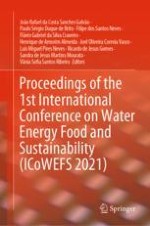2021 | Buch
Proceedings of the 1st International Conference on Water Energy Food and Sustainability (ICoWEFS 2021)
herausgegeben von: João Rafael da Costa Sanches Galvão, Paulo Sérgio Duque de Brito, Filipe dos Santos Neves, Flávio Gabriel da Silva Craveiro, Henrique de Amorim Almeida, Joel Oliveira Correia Vasco, Luís Miguel Pires Neves, Ricardo de Jesus Gomes, Sandra de Jesus Martins Mourato, Vânia Sofia Santos Ribeiro
